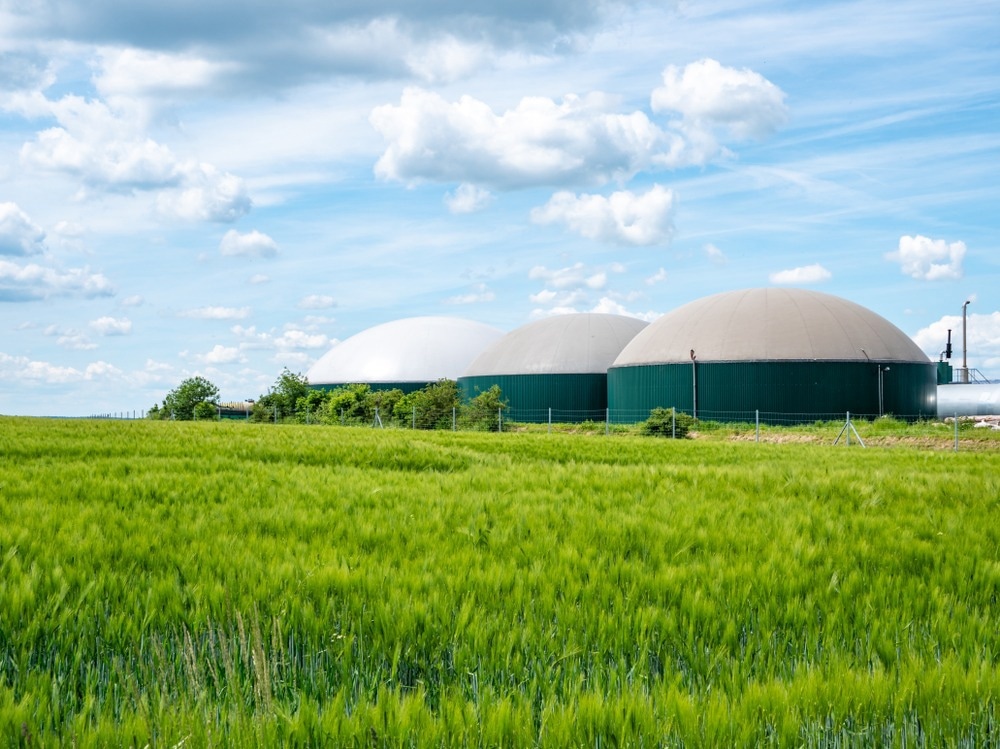In a paper published in the journal Scientific Reports, several bimetallic and trimetallic nickel-based catalysts were synthesized in a fixed-bed reactor and then examined for catalytic performance in the methane and carbon dioxide (CO2) conversion of biogas for carbon nanotubes and hydrogen production.
 Study: Development of high-performance nickel-based catalysts for production of hydrogen and carbon nanotubes from biogas. Image Credit: Animaflora PicsStock/Shutterstock.com
Study: Development of high-performance nickel-based catalysts for production of hydrogen and carbon nanotubes from biogas. Image Credit: Animaflora PicsStock/Shutterstock.com
The Importance of Renewable Energy
Emissions of CO2 and other greenhouse gas resulting from human activities are a major cause of climate change and represent one of the most pressing issues in the world today.
Renewable energy sources, which are the focus of modern research, provide twofold advantages. They can minimize pollution and climate change caused by burning fossil fuels while also improving domestic energy supplies.
How Can Biogas Help?
Biogas provides a particularly appealing way for utilizing specific types of biomass to cover partial energy requirements in rural as well as industrial settings, which sets it apart from other types of renewable energy sources.
Biogas is a combination predominantly composed of two constituents: methane and CO2. It may be used to produce electricity, heat, and car fuel.
An intriguing approach for biogas is to immediately transform it into syngas composed of hydrogen and carbon monoxide (CO). Syngas may be created using several methods, including partial oxidative or steam reforming of methane (POM or SRM).
Another approach is the dry reforming of methane (DRM) which has significant economic and environmental benefits. DRM has been hailed as a promising technology for producing syngas using biogas.
DRM can create syngas with a hydrogen/CO ratio near unity, which can then be processed to develop high-value products and is critical for reducing emissions of greenhouse gases. Nonetheless, coking is a major obstacle for DRM as it might result in the deactivation of catalysts.
The Qualities of Different Catalysts
Ni-based catalysts exhibit excellent catalytic performance and are quite inexpensive; therefore, they have been used widely for large-scale applications. Higher concentrations of nickel and higher reaction temperatures may greatly boost methane conversion.
Cobalt (Co)-supported catalysts have also been found to be quite comparable in catalytic effectiveness to Ni-based catalysts.
While iron (Fe)-based catalysts have reduced catalytic activity as compared to Co or Ni-based catalysts, they have attracted more interest than Co-supported catalysts because of their cost-effective and eco-friendly nature.
Are Bimetallic Catalysts Any Better?
The effectiveness of these metallic catalysts suffers a rapid decline because of carbon-deposition-induced deactivation followed by sintering due to particle aggregation at elevated reaction temperatures. This continues to be the major hurdle for the DRM method.
Most research efforts have therefore focused on incorporating an additional metal to produce bimetallic catalysts to enhance the longevity of the catalytic materials.
Bimetal catalysts have been reported to exhibit better stability and activity as compared to single-metal catalysts. The generation of bimetallic alloys in the catalytic reactions could explain the improved performance of bimetallic catalysts.
Incorporating molybdenum (Mo) in a suitable amount in a Co-based catalyst may effectively boost the output and specificity of the fabrication of high-quality carbon nanotubes (CNTs). The addition of a small quantity of Mo can help in keeping the catalyst active for extended periods.
The Role of Catalyst Supports
Catalyst supports have a significant impact on catalytic behavior in the DRM procedure. They are particularly useful because of their anti-sintering abilities, mechanical robustness, and high specific areas.
MgO and Al2O3 have received much attention as catalyst support materials due to their availability, inexpensive nature, and good thermal stability.
Important Findings of the Study
In this work, bimetallic (NiMo) nickel-based catalysts and trimetallic (CoNiMo, FeNiMo, and CoFeMo) nickel-based catalytic materials anchored on MgO were used for the growth of CNTs and biogas production.
The experimental findings revealed that adding a third component (cobalt or iron) to the NiMo/MgO nickel-based catalyst brought about no further improvements to the effectiveness of the nickel-based catalyst.
The NiMo/MgO nickel-based catalyst showed the maximum activity for methane cracking as well as reforming. Furthermore, there was negligible deactivation of the nickel-based catalyst after three hours.
Hydrogen production was achieved with high levels of purity. Moreover, the tightest distribution and lowest diameters of carbon nanotubes with a graphitizing degree were found to be equivalent to those of commercially produced carbon nanotubes.
The NiMo/MgO nickel-based catalyst was, therefore, quite adequate for the direct conversion of biogas into syngas for hydrogen production and growth of multi-walled CNTs.
Reference
Saconsint, S., Sae-tang, N., Srifa, A., Koo-Amornpattana, W., Assabumrungrat, S., Fukuhara, C., & Ratchahat, S. (2022). Development of high-performance nickel-based catalysts for production of hydrogen and carbon nanotubes from biogas. Scientific Reports, 12. Available at: https://www.nature.com/articles/s41598-022-19638-y
Disclaimer: The views expressed here are those of the author expressed in their private capacity and do not necessarily represent the views of AZoM.com Limited T/A AZoNetwork the owner and operator of this website. This disclaimer forms part of the Terms and conditions of use of this website.